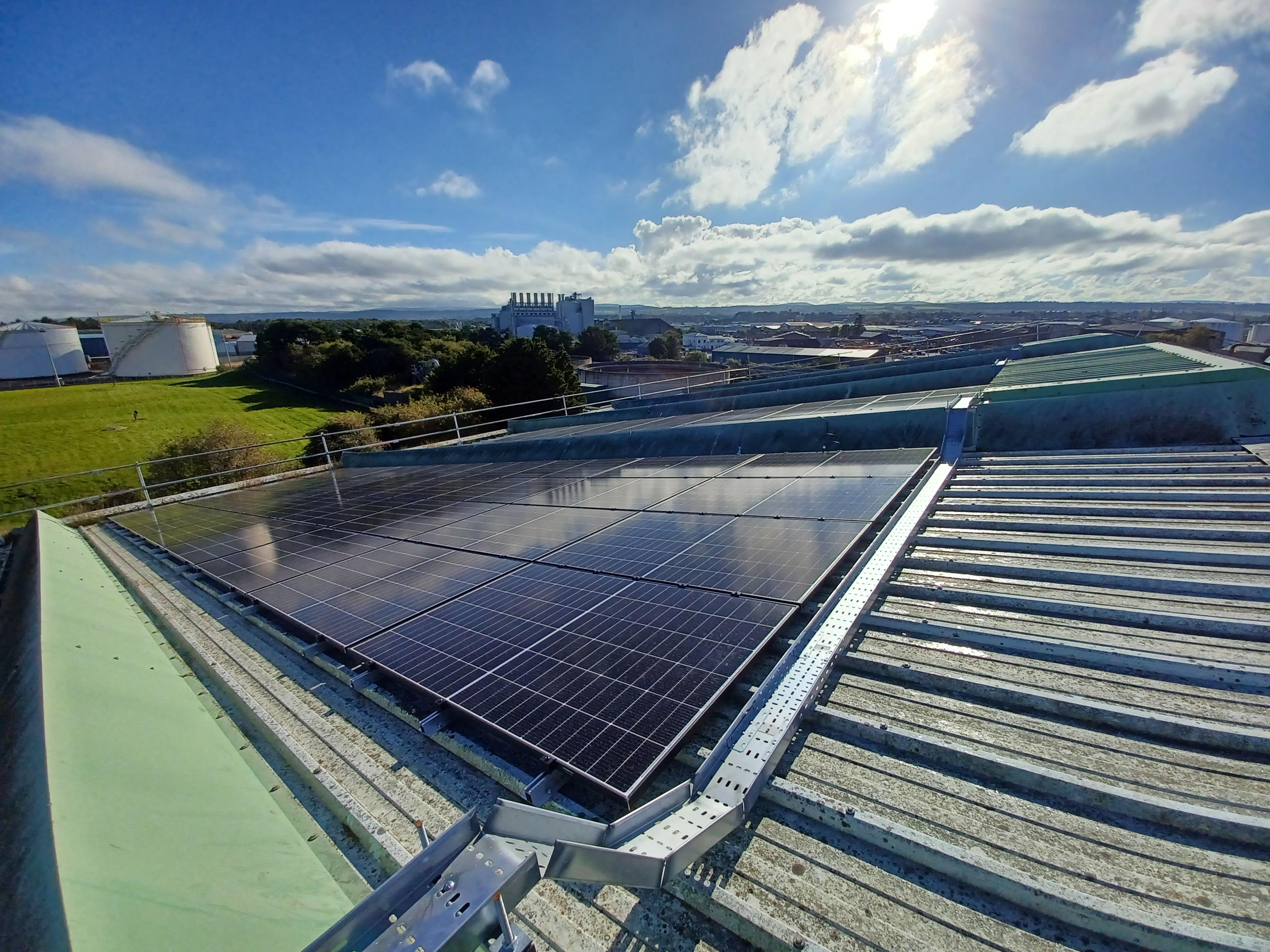Scottish Water provides solar boost for two waste water pumping stations

Scotland’s largest waste water pumping station is now partly powered by renewable energy after work was completed on a £478,000 solar power scheme.
The Scottish Water site, in Gailes near Irvine, has seen 576 solar panels installed on the ground and roof of the pumping station, generating around 0.27GWh of green energy each year.
It means that 7% of the power used by the pumping station – which returns treated waste water back to the sea – is now provided by solar energy, saving around 54 tonnes of carbon dioxide equivalent annually.
It is the first Scottish Water solar project to see the use of in-line mounted solar panels which were built into the structure of the pumping station roof while it was being replaced.
A range of biodiversity work is also in the process of being delivered at the site, including the planting of wildflowers and hedges, and installation of bat and hedgehog boxes.
The project has been led by Scottish Water Horizons, the public utility’s commercial subsidiary, and delivered by R&A Group.
Scottish Water Horizons project manager, Pauline Donelly, said: “It is great to see this project completed and to have more solar energy now powering the processes all our customers rely on across Scotland.
“In the last three years we’ve installed more solar energy than in the previous 12 combined, with capacity for 14.4 GWh installed compared to 9.6 GWh, and we continue to ramp up the pace and scale of our renewables programme as we respond to the climate crisis and focus on meeting our net zero targets by 2040.”
Scottish Water operations team leader Ian MacKinnon, added: “The pumping station at Gailes is the largest in Scotland and as such, is a big user of energy, helping to return treated waste water back to the natural environment.
“It is great that some of the carbon associated with this essential process is now being offset by renewable energy, helping us to meet our net zero ambitions.”























